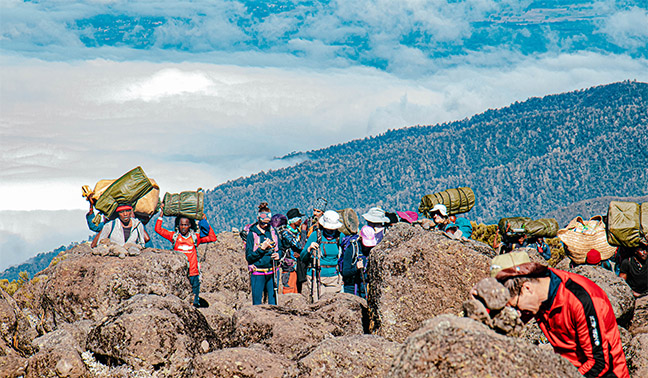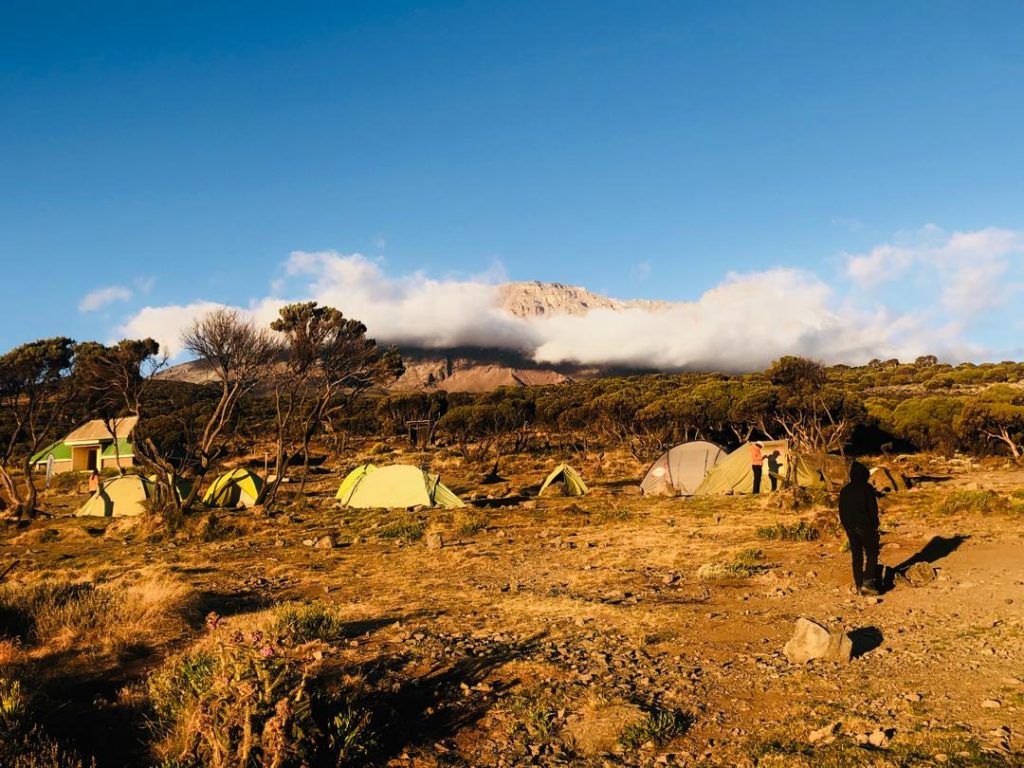
By, swahilinomads
- 201 Views
- 2 Min Read
- (0) Comment
Mount Kilimanjaro: The Roof of Africa
Mount Kilimanjaro, standing tall at 5,895 meters (19,341 feet), is Africa’s highest peak and one of the most iconic mountains in the world. Located in northeastern Tanzania, near the border with Kenya, Kilimanjaro is a breathtaking natural wonder, drawing adventurers, hikers, and nature lovers from across the globe.

Geography and Landscape
Kilimanjaro is a dormant volcanic mountain, made up of three cones: Kibo (the highest), Mawenzi, and Shira. Each of these distinct cones represents different stages of volcanic activity, making Kilimanjaro a geological marvel. The mountain offers a unique combination of tropical forest, alpine desert, and arctic-like summit zones, giving trekkers a taste of multiple ecosystems in one hike.
Hiking and Climbing Routes
Kilimanjaro has several routes leading to the summit, each with unique scenery, difficulty, and duration. Some of the most popular routes include:
- Machame Route – Known as the “Whiskey Route,” it offers scenic landscapes but is physically demanding.
- Marangu Route – The “Coca-Cola Route” is easier with hut accommodations, often chosen by beginner climbers.
- Lemosho Route – This scenic route offers a longer acclimatization period, ideal for those looking to enjoy the landscapes and increase their summit chances.
- Rongai Route – Approaching from the north, this route is drier and less crowded.
Climbing Experience
Climbing Kilimanjaro is both a physical and mental challenge, often taking 5–9 days depending on the route. Along the way, climbers experience diverse terrains, from rainforests at the base to alpine deserts, and finally, the icy summit. Reaching the top at Uhuru Peak is a remarkable experience and a testament to resilience, endurance, and the spirit of adventure.
Wildlife and Ecology
The lower slopes of Kilimanjaro are home to a diverse range of wildlife, including elephants, buffalo, monkeys, and various bird species. As climbers ascend, they pass through lush rainforests and alpine moors filled with unique plant species like giant groundsels and lobelias. This biodiversity makes Kilimanjaro a fascinating destination for nature enthusiasts and conservationists alike.

Conservation and Responsible Tourism
As a UNESCO World Heritage Site, Kilimanjaro’s delicate ecosystem is under threat from climate change, deforestation, and tourism pressure. Conservation efforts aim to protect the mountain’s environment, while responsible tourism practices, such as following eco-friendly guidelines and supporting local porters, help maintain its integrity for future generations.
Why Climb Kilimanjaro?
Mount Kilimanjaro is more than a destination; it’s a journey of self-discovery, a chance to push your limits, and an opportunity to connect with nature in a profound way. Every year, climbers from around the world come to Tanzania for this once-in-a-lifetime experience, seeking the thrill of conquering the “Roof of Africa.”
Whether you’re an experienced mountaineer or a first-time climber, Kilimanjaro offers an accessible yet challenging climb that promises unforgettable memories and a sense of achievement.

Leave a comment: